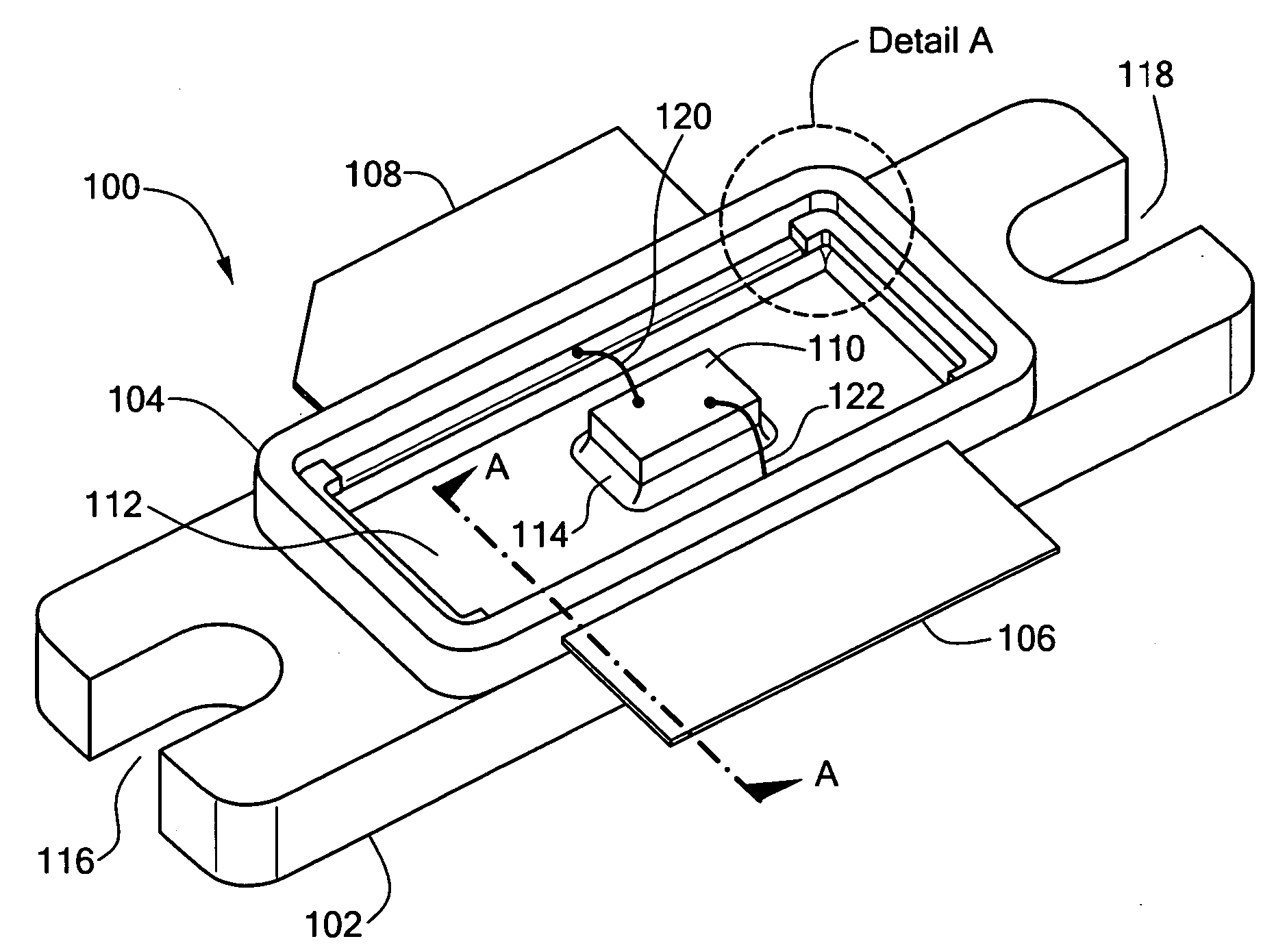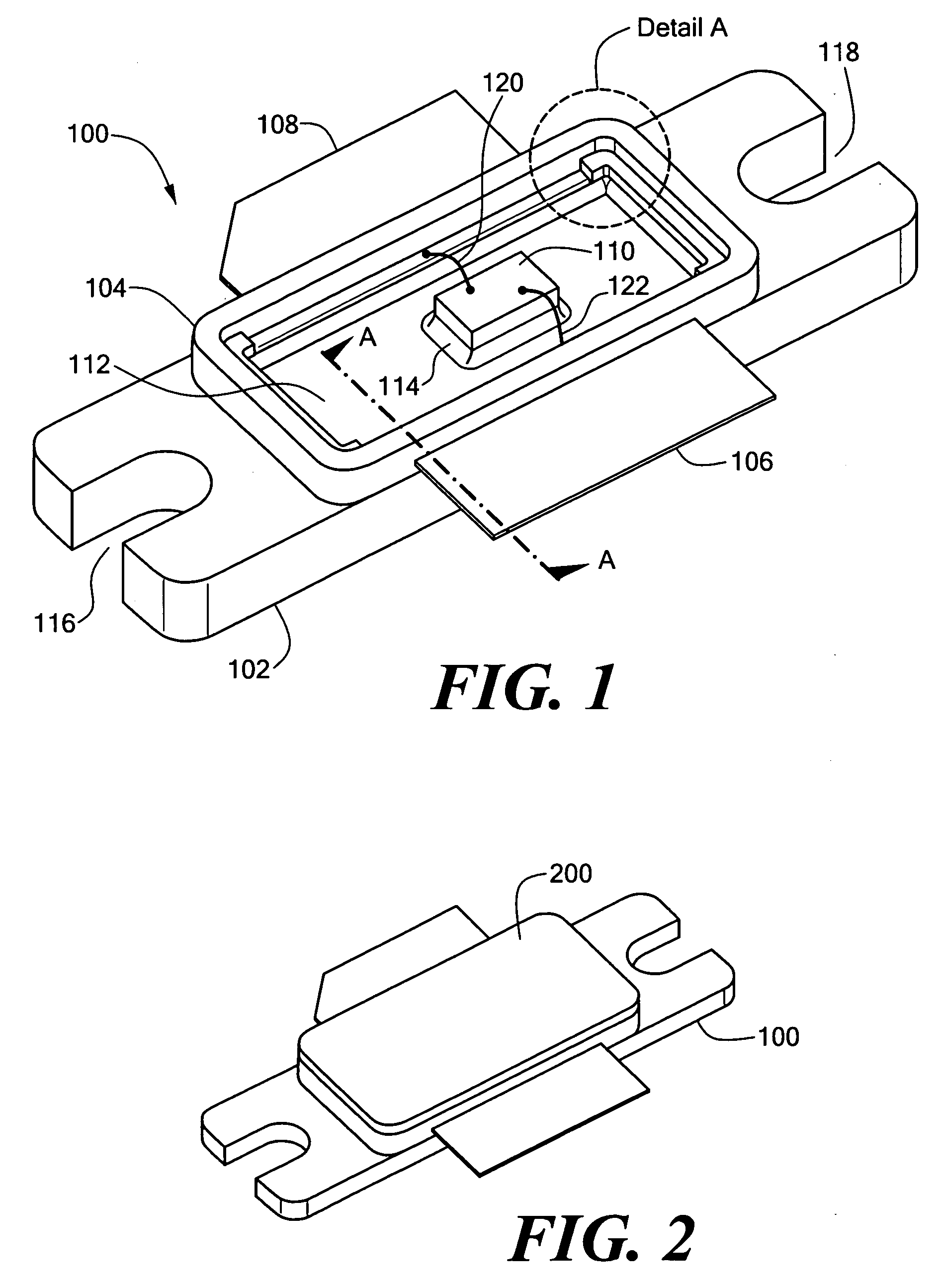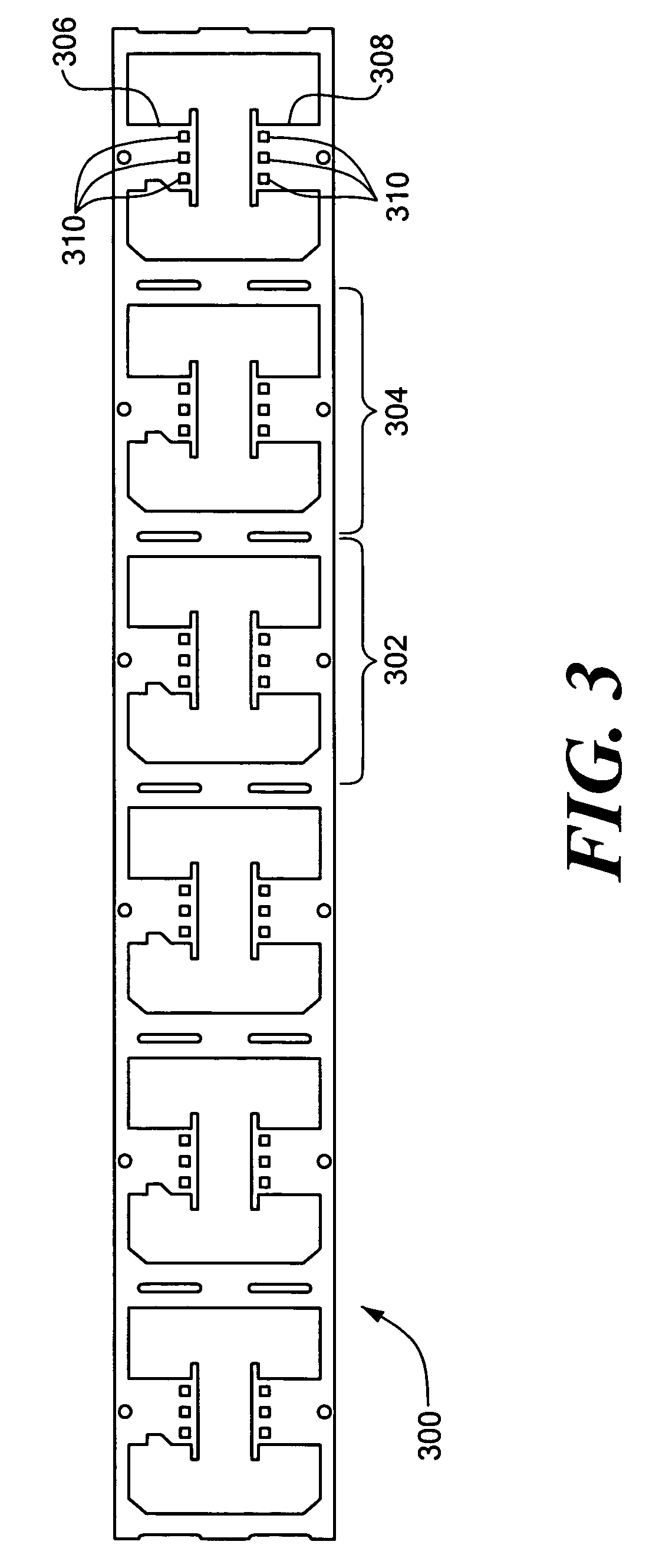Methods for enclosing a thermoplastic package
a thermoplastic and package technology, applied in the field of circuit packages, can solve the problems of damage or deformation of plastic, high cost of process, limited thermal conductivity of the resulting alloy, etc., and achieve the effects of improving electrical and thermal conductivity and mechanical integrity, low cost, and low piece coun
- Summary
- Abstract
- Description
- Claims
- Application Information
AI Technical Summary
Benefits of technology
Problems solved by technology
Method used
Image
Examples
Embodiment Construction
[0037] The contents of application Ser. No. 10 / 767,309, filed Jan. 29, 2004, and the contents of provisional Application No. 60 / 443,470, filed Jan. 29, 2003, are hereby incorporated by reference.
[0038] The present invention provides a low piece-count circuit package that can withstand high die-attach temperatures and can provide a hermetically sealed air cavity for a die, without the use of adhesives. FIG. 1 shows an exemplary circuit package 100, according to one embodiment of the present invention. For clarity, the circuit package 100 is shown without a lid. The circuit package 100 includes a flange 102, a frame 104 and two leads 106 and 108. The frame 104 electrically insulates the leads 106 and 108 from the flange 102 and each other. A die 110 is attached to a die-attach area 112, such as by eutectic solder 114. For clarity, FIG. 1 shows only one die, although typically two or more die can be attached to the die-attach area 112.
[0039] The eutectic solder 114 electrically bonds...
PUM
 Login to View More
Login to View More Abstract
Description
Claims
Application Information
 Login to View More
Login to View More - R&D
- Intellectual Property
- Life Sciences
- Materials
- Tech Scout
- Unparalleled Data Quality
- Higher Quality Content
- 60% Fewer Hallucinations
Browse by: Latest US Patents, China's latest patents, Technical Efficacy Thesaurus, Application Domain, Technology Topic, Popular Technical Reports.
© 2025 PatSnap. All rights reserved.Legal|Privacy policy|Modern Slavery Act Transparency Statement|Sitemap|About US| Contact US: help@patsnap.com



